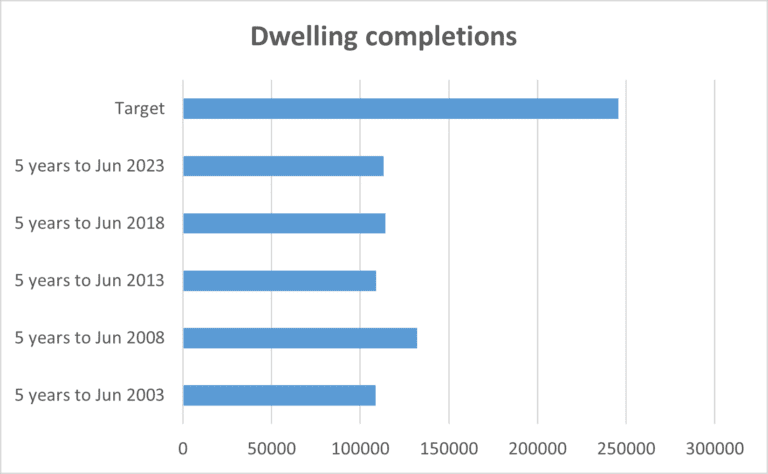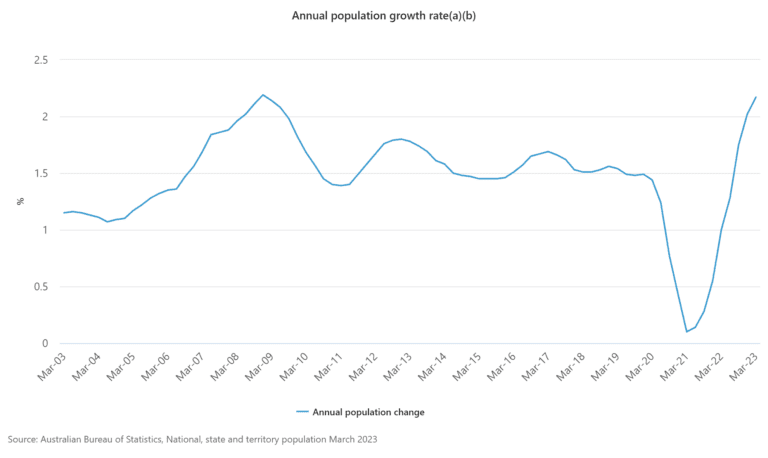The federal government has set itself the goal of improving housing affordability by increasing supply, thereby reducing demand.
As a result, the government has promised to facilitate the building of 1.2 million new homes in the five years from July 2024. Based on its share of the national population, Queensland is expected to deliver 246,000 of those homes, according to Urban Taskforce Australia.
To be clear, only a tiny percentage of the 1.2 million homes will be built by the federal or state governments; the vast majority are expected to be built by private developers. The role of governments is to create conditions that incentivise developers to build and make it easier for them to do so.
Focusing just on Queensland, will our state be able to meet its housing target?
The answer is almost certainly no.
The housing pipeline is drying up
To understand why, we only need to look at official data, from the Australian Bureau of Statistics (ABS).
Three points stand out.
First, in the five previous five-year periods, the number of dwellings that were built was about half the targeted number:
- 5 years to June 2023 = 113,150 completions
- 5 years to June 2018 = 114,274 completions
- 5 years to June 2013 = 108,960 completions
- 5 years to June 2008 = 132,185 completions
- 5 years to June 2003 = 108,695 completions

Second, in the most recent five-year period, 177,302 home building approvals were issued in Queensland.
Please note that these are only approvals – some developers and owner-builders get approvals but ultimately decide not to build, which means not all approvals end up as completions. However, even if all those approvals did become completions, Queensland would still be at just 72% of its target, leaving an enormous shortfall to make up.
Third, the number of approvals has been trending down (see graph), which means Queensland’s pipeline of future housing is getting emptier rather than fuller.

House building times are lengthening
There’s one other reason why Queensland is unlikely to reach its residential construction target.
The data show (see chart) that in both Queensland and throughout Australia, the amount of time needed to build a house is increasing, according to Master Builders Australia analysis of ABS data.
The reason that matters is because there are only so many builders to go around: the longer it takes the average builder to complete a job, the fewer projects they’ll be able to start.

Queensland’s population is surging
Coincidentally, as supply is trending down, demand is trending up, due to record levels of migration.
Australia’s population grew 2.2% in the year to March (see graph), which was the fastest growth rate in 15 years, according to the ABS.
And Queensland’s population grew by even more – 2.3%.

Why property prices are likely to keep rising
What happens when supply fails to keep pace with demand?
Prices rise.
Remember, that’s why the federal government is trying to increase supply – to put downward pressure on demand and therefore prices.
So if, as seems likely, Queensland fails to meet its housing construction target, Queensland property prices are likely to keep rising over the long-term.
Assuming prices do keep rising, the sooner you buy the better, whether you’re a first home buyer who wants to get ahead of future price rises or an investor who wants to enjoy capital growth.
To discuss your options, contact Lauren Jones on Lauren@ljba.com.au or 0414 221 741, or fill in this contact form.

